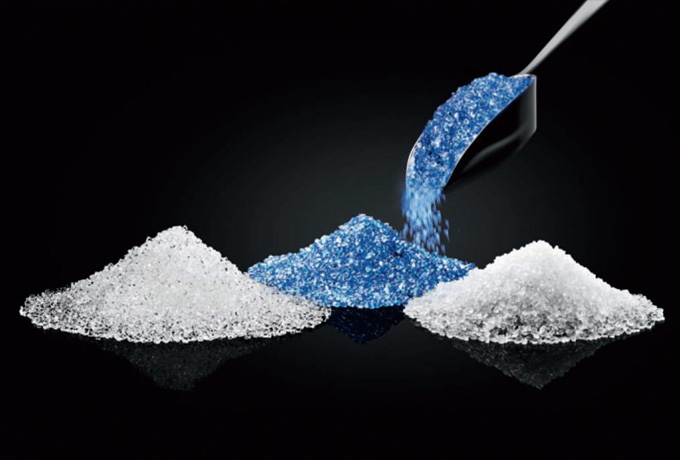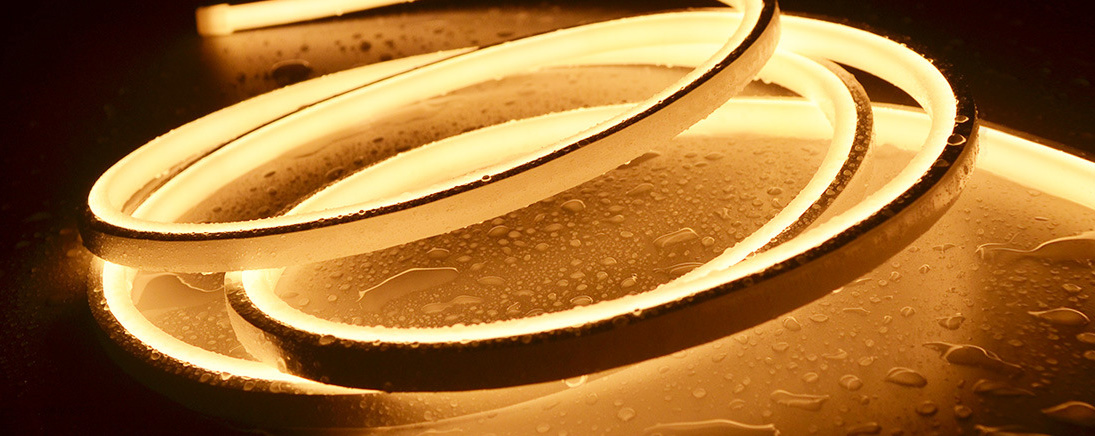We may see the word “silicone” when searching for led neon lights, why is silicone being talked about with neon lights? When we split the structure of the led neon lighting, it becomes an LED strip light and a silicone LED strip diffuser.
Install the LED strip in the silicone diffuser channel which can bring about the neon sign lights we often see. You can DIY neon signs by purchasing the right silicone led channel separately for your led light strip.
LED neon lights are advancement of traditional neon lights. The glass material of traditional neon lights is replaced by soft materials to achieve flexible bendability. There are two main materials used in neon light signs on the market: PVC material and silicone material. Why is the silicone led diffuser better? Let’s compare carefully.
PVC Material vs Silicone Material
The flexible neon led strip made of PVC material was introduced to the market earlier, and it is still used today by virtue of its mature technology and price advantage. However, as the market puts forward higher requirements for products and applications, the defects of PVC material characteristics gradually appear.
Therefore, a material with better performance – silicone has entered the field. After the continuous improvement of process technology in recent years, the technology of silicone neon led lights has become more and more mature and perfect. Its excellent characteristics make it gradually replace the PVC neon light and become the mainstream development direction of the current market.
Below we will comprehensively compare the differences between the two materials.

PVC (Polyvinyl chloride) LED Neon Lights: The temperature resistance range is about -15℃-80℃. The led neon strip material feels hard and is easily affected by various outdoor factors.
The stability of the PVC led neon to light and heat is poor. After long-term sunlight exposure, it will decompose to produce hydrogen chloride, which will further autocatalyze decomposition, causing discoloration, and rapid decline in physical and mechanical properties, resulting in hardening, cracking, and other phenomena.
It is not suitable for places that are particularly humid and corroded by acids, alkalis, and salts. In addition, the burning of PVC will produce irritating toxic gas, which is harmful to human health.
Compared with PVC material, silicone LED neon lights have the following advantages:
- Excellent weather resistance: The silicone neon led strips have good thermal stability and can maintain a normal soft state for a long time under the environment of -50 ℃ -150 ℃, without embrittlement, deformation, softening, aging, etc.
- Excellent UV resistance: Silicone led neon strip lights can be exposed to strong sunlight for a long time (more than 5 years) without yellowing and aging. It can be used in outdoor environments, which is very suitable for your outdoor LED projects.
- Excellent corrosion resistance: Silicone neon led rope light is chemically stable, does not react with any substances except strong alkali and hydrofluoric acid, and can resist the corrosion of ordinary acids, alkalis, and salts, can be used in seaside, chemical plants, gas stations, yacht environments or facilities.
- Excellent light transmittance: The light loss to the led light strip on the silicone LED neon lighting can be reduced to a lower level.
- Excellent tear resistance: Excellent tear resistance, good physical and mechanical properties, after the silicone is formed, it can withstand any manual tearing, and the silicone led neon tube lights will not be damaged and deformed (it will fully rebound after stretching).
- Good thermal conductivity: The thermal conductivity of extruded silicone neon tube is 27W/MK, while the thermal conductivity of PVC neon tube is 0.14W/MK, which can effectively dissipate heat for LED strip lights.
- Flame retardant, not afraid of fire. PVC materials are easily ignited by fire, while silicone neon tubes are not.
